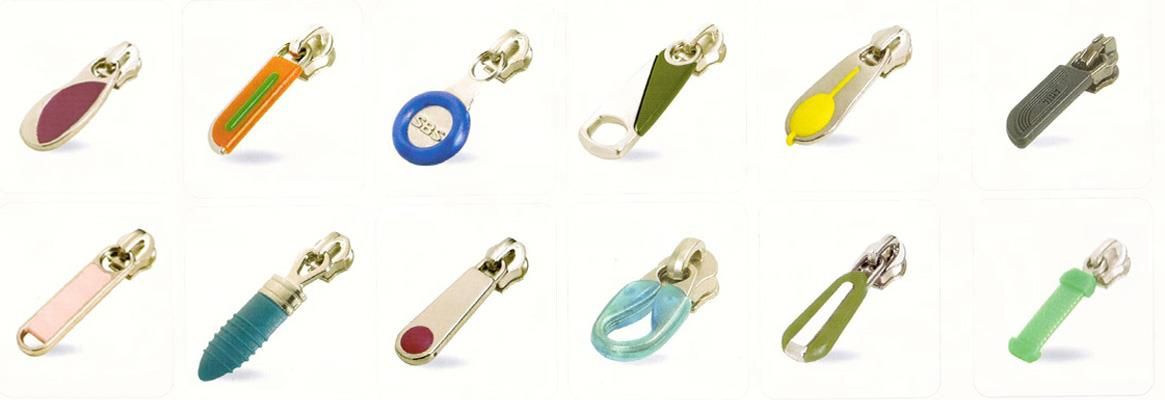As components attached to the zip sliders for moving up and down the zip chains, zip pulls can be classified into two categories according to the two different moulding techniques:
1. Injection moulding zip pulls
2. Drop moulding zip pulls
There are pros and cons of using different type of source materials for making injection moulding zip pulls. We will discuss about these source materials and their pros and cons here, assisting you in selecting more suitable zip pulls.
TPU (Thermoplastic Polyurthane) Zip Pulls
TPU is comprised of TPU90A20 and TPU95AU10 types.
1. TPU90A20
TPU90A20 is eco-friendly with an easy moulding capacity, whose moulding temperature varies from 108oC-185oC. It shows resistance to wear and tear and heat, along with having great chemical stability.
Despite many of its advantages, TPU90A20 shows poor resistance to yellowing that is it soon changes its colour with the changes in the environment. Additionally, dye transfer can easily take place which can be of some disadvantage to the manufacturer.
2. TPU95AU10
Apart from being eco-friendly and having resistance to wear and tear and heat, along with stable chemical stability similar to that of TPU90A20, TPU95AU10 also shows resistance to yellowing that can reach up to level 4 and level 4.5.
However, TPU95AU10 cannot be easily moulded compared with TPU90A20, whose moulding temperature varies from 180oC to 185oC.
PVC (PolyVinyl Chloride) Zip Pulls
PVC is further divided into the following categories.
1. PVC 50
2. PVC 75
3. PVC 85
4. PVC 90
5. PVC 110
Most of them are not eco-friendly so they are seldom used for making zip pulls.
Unlike rest of the PVC varieties, PVC 85 is eco-friendly and expresses resistance to wear and tear, and can also be moulded easily with the temperature varying from 170oC-175oC. However, it is less transparent and appears slightly yellow when used for making white or transparent articles.
The rest PVC varieties are transparent and can be easily moulded, whose moulding temperature varies from 170oC to 175oC. They also show resistivity to wear and tear. Despite some of the pros, they display poor resistance to heat and are not chemically stable as they can be easily decomposed when exposed to heat and dye transfers also occur easily. Additionally, they are not eco-friendly.
PP Zip Pulls
The PP is widely used for making such zip pulls that need high rigidity. PP is also eco-friendly and can be easily moulded with the temperature varying from 190oC-195oC.
References:
1. SBS zipper








Comments